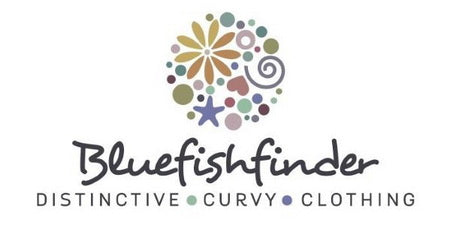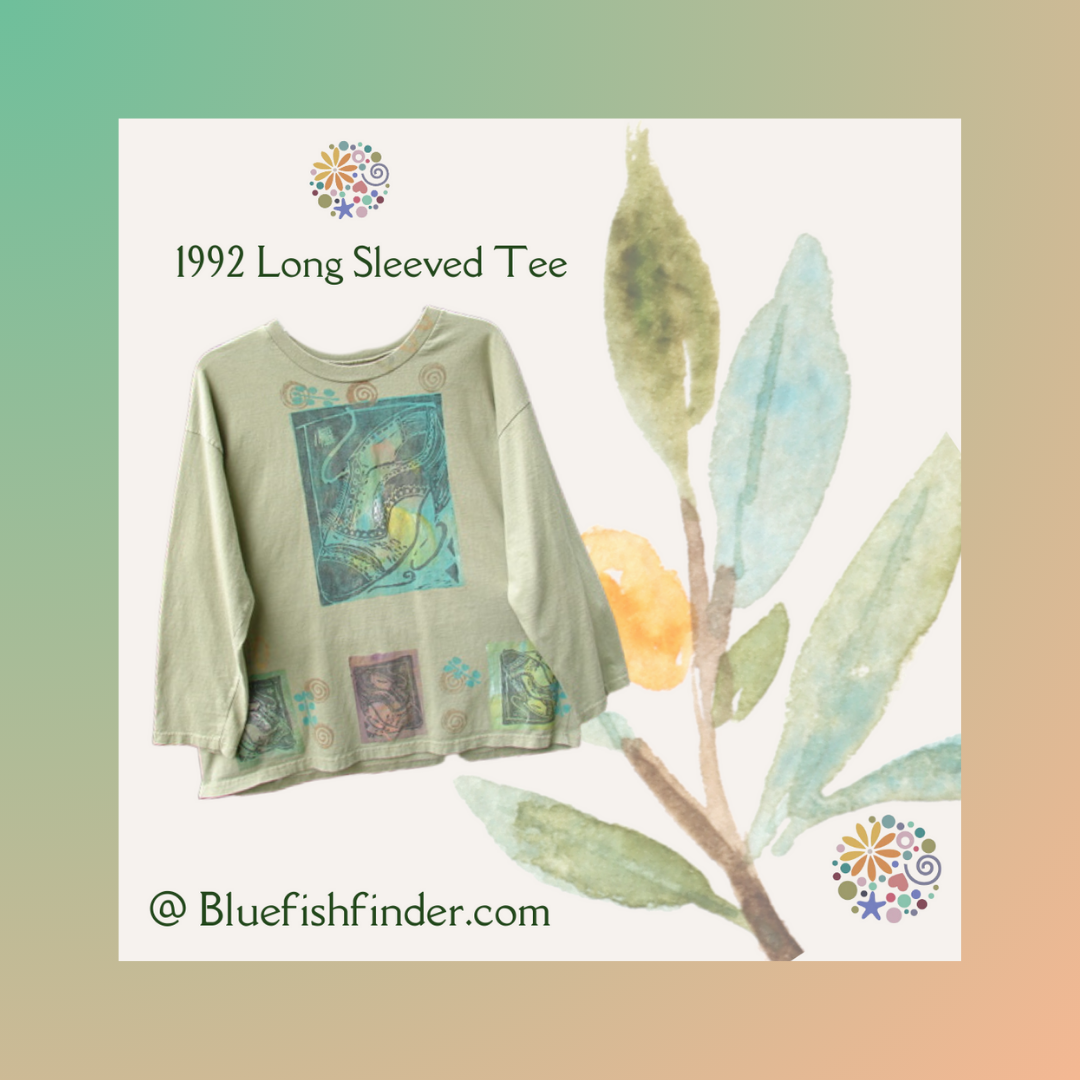Blue Fish Clothing 1992 ~ Line Sheets
"Once upon a time in 1992 in America on planet Earth, there was a limited Holiday line dyed Black Sand: A warm rich black: Alternative … The styles were simple + Beauty-full-Hand Block printed by imaginative artists in Deep, mysterious colors & metallic tones equals irresistible, yes…and these clothes made people feel good and special, and we saw them smiling …” ~ Excerpt from the Holiday 1992 wholesale line sheet, which is the last page of 1992 ~
1992 shows the development of a garment manufacturing company. What follows are the seasonal line sheets for 4 distinctive themed seasons. The basics from 1991 are also carried over and seen in the summer 1992 line 100% cotton jersey remains the majority of the line, but 1992 saw the introduction of Danskin, a private label in Blue Fish colors, as well as a looser and thicker thermal offered in the Fall of 1992. The Holiday 1992 line was exciting. It was the first time Blue Fish would attempt a very small and focused theme line, and also the first time the company experimented with metallic paints. The metallic paint would later be identified as an OSHA controlled substance requiring the installation of a huge automatic ventilation fan at the 6th Street building in Frenchtown.
The faint notes on the Spring and Summer sheets indicate where the zig-zag silk screen label needed to be applied. “Back out corner square” meant that the label would be sewn on the back, on the outside, in the bottom corner, and would be one of the square patches. “In bottom hem long” meant that the label would be sewn on the back, at the hem, inside the garment, and would be one of the long rectangle patches.
Towards the end of this year, the introduction of a “W” and a” J” in front of the style number differentiates between the style in cotton jersey and cotton thermal. Garments are still being shipped with minimums, but you do see them come closer to the standard of 6 per order that will be used for many years.The orders are also still shipped to wholesale accounts in assorted colors only. In 1992, three sizes are introduced for some style - Size 1 and Size 2 and One Size Fits All (OSFA) In the real world, sizes 1 and 2 roughly equated to medium/large and large/extra-large, but the OSFA fell in-between the size 1 and 2 or larger than the size 2.
Somewhere in the vicinity of 1992 and 1993, the Frenchtown operation moves from above the store in the old mill on Trenton Avenue to the Krause building on 6th Street.The building is still largely occupied by Krause Tins. Over the years, the fish gradually carved out a larger and larger area as Mr. Krause gradually sold off his tin press equipment. Throughout the process, he routinely placed free tins and trays out in the lunchroom, starting a tradition of the ‘free bin’ in the Blue Fish lunchroom, which would continue until the day it closed. About this same time, the studio in Taos is reduced to a specialized design space, and shortly afterwards is phased out completely with all the production occurring at the Frenchtown studio by the end of 1994.
The Silly Collar Dress presented the earliest production disaster. The collars were detachable and so went through the dye process separately. It was too early to be dealing with garments of different sizes, never mind detachable parts! In the grading of the pattern, the collars were sized differently as well, but the difference was very subtle; and of course, as later learned, each garment shrinks differently in the garment dye process. To make the matching of collars to dresses even more difficult, collars are getting killed for seconds and dresses are getting killed for seconds in each color and size, and not at the same rate. It would be years before discovering 2 key elements in doing styles with detachable parts ~ Size the detached part the same, regardless of the style size and make extras! Everyone would wander around grumbling under their breath, “Silly collar…I’ll give you a silly collar…”

